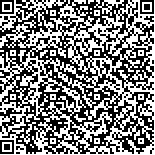下载中心
优秀审稿专家
优秀论文
相关链接
摘要

元胞自动机CA(Cellular Automata)和多智能体ABM(Agent-Based Model)模型是土地利用格局和演化模拟的主流方法,两者在模拟自然因素影响和人文驱动机制方面具有突出优势,为LUCC研究提供了重要的工具。当前,ABM无论在模型构建还是应用研究方面,CA和ABM均取得了显著进展。论文从数据基础、模拟尺度、CA转换规则挖掘、ABM行为规则定义、CA和ABM的耦合4个方面梳理土地利用模拟模型和方法的研究进展。并总结这些模型在虚拟城市模拟与理论验证、真实城市模拟与规划预测以及多类用地模拟与辅助决策等方面的应用。最后,总结土地利用模拟模型在精细模拟和全球变化研究方面存在的局限性,认为未来发展将主要集中于解决从2维模型向3维模型发展、大数据与规则精细挖掘以及大尺度模拟与知识迁移等问题。
关键词:
土地利用/土地覆盖变化 过程建模与模拟 元胞自动机 多智能体系统 尺度Land Use and Land Cover change (LUCC) is a main research subject of global environmental change and sustainable development. LUCC is a complex and dynamic process that involves both natural and human systems. Land use simulation models are powerful tools for understanding the driving forces of LUCC, for supporting urban planning and decision making, and for providing important information to evaluate the ecosystem effects of LUCC.
Land use dynamic systems are difficult to predict through traditional "top-down" models. The Cellular Automata (CA) model and Agent-Based Model (ABM) are "bottom-up" approaches that have attracted increasing attention as powerful modeling tools in simulating land use patterns and evolution processes. In a CA model, each cell has a finite number of states, which can represent land use or land cover types. Changes in individual cells are defined by transition rules and generate the macro pattern of land use changes. The CA model has outstanding advantages in simulating the natural driving factors of land use dynamics. However, the influences of human factors are difficult to represent in a CA model. ABM, by contrast, can reflect the decisions and behaviors of individuals, such as government, investors, and residents. In an ABM, agents can move and interact with each other and with the environment. These local interactions generate certain land use patterns on the global scale. Thus, the two models have distinct advantages in modeling land use dynamics.
Currently, the development of the CA and ABM models has achieved several important breakthroughs. This paper summarizes the recent progress in land use simulation models from the perspective of theory and methodology, including scale sensitivity, CA transition and ABM behavior rules, and coupled CA and ABM models. This paper also outlines the applications of these models in virtual city simulation and theoretical verification, realistic city simulation and scenario prediction, multitype land use and cover simulation, and decision support. However, the current land use models have obvious limitations on some crucial issues, such as fine and large-scale simulation. Hence, this paper discusses these problems and proposes the inclusion of three-dimensional modeling, big data, and rule-mining for fine simulation, as well as large-scale simulation and knowledge transfer, in future studies.

